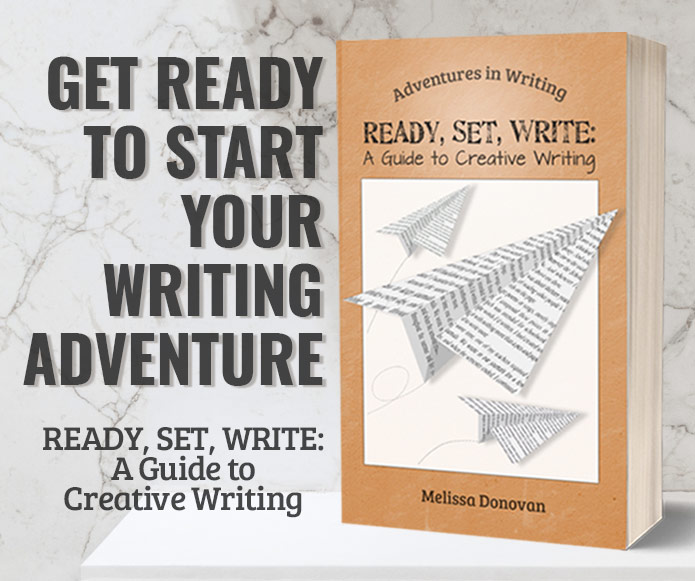Please welcome author Lisa Cron with a guest post on sensory details in writing.
Writers are often advised to stock their stories with abundant sensory details in order to bring them to life. This can indeed be good advice, because sensory details allow the reader to create vivid mental images.
In fact, as recent brain imaging studies reveal, when we’re lost in a good story, the same areas in our brain light up as when we’re actually experiencing those things in real life. So it stands to reason that that the more sensory details you can pack into your story the better, right?
Wrong.
The trouble is when given carte blanche, writers are tempted to pile on so many sensory details that they clog their stories’ arteries with TMI (too much information) and nearly choke the things to death. We’ve all read those stories: the sun always shimmers, the grass is always as fragrant as a dewy spring morn, and the sumptuous taste of something is always lingering on the protagonist’s tongue. To make matters worse, this is where writers often indulge in the lovely, lyrical language that may sometimes make them good writers but almost always makes them bad storytellers.
That’s because what they tend to forget is that the real goal of sensory details isn’t simply to let us know what it looked like or how it felt, physically. The goal is to choose the sensory details that give us insight into the story itself, so we experience it emotionally. That’s what’s happening when our brain lights up as we read, we’re feeling the story. This means sensory details must be chosen for a story reason, giving them subtext, rather than “just because.”
Just because the sun beat down on the protagonist’s skin, we don’t need to know it. Just because she could still taste the strawberry despite the fact she’d brushed her teeth, flossed, and gargled six times, we don’t need to know it. Just because the steering wheel felt cool to the touch, well, you know the drill.
So how do you know which details to include? By taking a lesson from how our brain sifts through incoming information. Every second our five senses are lobbing 11,000,000 bits of information at us — those bits are sensory details. Yet our brain knows that we need to be shielded from at least 10,999,960 of them, lest we be so overwhelmed we shut down altogether. Thus the only details it lets through are the ones with the potential to affect us in the moment. In other words, we only become aware of the sensory details that might have an actual consequence.
With that in mind, here are four reasons to include a sensory detail in your story:
1. It has a literal consequence. That is, it’s part of a cause-and-effect trajectory that relates to the plot.
For instance, it’s a blistering 97 degrees and so humid it’s hard to breathe, but if Roger, who loathes the heat, doesn’t leave his deliciously cool air conditioned office in the next five minutes and trudge across town, he’ll miss his son Rodney’s school play – again.
2. It gives us insight into the character, which consequently tells us something we need to know about him.
The impeccable crispness of Roger’s bespoke linen suit makes him feel as if he’s proved to everyone that he’s left his humble roots behind. The thought of that suit soaked with sweat and clinging to him like the cheap knockoffs his dad wore makes the thought of going outside almost more than he can bear.
3. It’s a metaphor, which intimates a deeper meaning.
Roger’s concern for his suit represents his fragile sense of self, and tells us that he has a lot to learn before the story ends.
4. It makes the world in which the story takes place in seem real
This brings us right back to the advice we began with: sensory details bring the story to life. But now we know the caveat: the goal is not to mimic the real world on the page. The real world is, after all, chock full of irrelevancies, chaos, confusion and the delightful vagaries of life. We get enough of that on our own, don’t you think? Stories let us slip out of the surface cacophony and into something just as real, but deeper. The goal of a story isn’t to tell us that something happened, it’s to show us why it happened. To do that you must filter out everything that’s irrelevant to what’s happening – like all those sensory details that don’t have anything to do with the story itself.
Does the reader need to be able to see and feel and experience the world of your story? Absolutely. Which is precisely why every sensory detail you choose must in some way give us insight into that world. After all, we all know what the world looks like, what we’re dying for is a glimpse of your world.
 About the Author: Lisa Cron is the author of Wired for Story: The Writer’s Guide to Using Brain Science to Hook Readers from the Very First Sentence (aff link). She teaches in the UCLA Extension Writers’ Program, and there’s nothing she loves more than working one-on-one with writers, helping them make sure the story they want to tell is actually there on the page. She can be found at wiredforstory.com.
About the Author: Lisa Cron is the author of Wired for Story: The Writer’s Guide to Using Brain Science to Hook Readers from the Very First Sentence (aff link). She teaches in the UCLA Extension Writers’ Program, and there’s nothing she loves more than working one-on-one with writers, helping them make sure the story they want to tell is actually there on the page. She can be found at wiredforstory.com.





I am so delighted to read this article , at last. I am one of those people who skip over ‘too much waxing lyrical ‘ as I think it detracts from the story and can definitely clog up my little brain, causing it to ache a little. Sometimes too it can seem like the author is ‘showing off’ or maybe missing writing poetry, or something.
Well written article. To the point, and I am relieved that I can now stop plumping up my writing just for the sake of it . I read a book once that had none of that stuff in it and it was great. Didn’t have to go for a nap every twenty minutes or so, to combat mental fatigue !
Cheers and good luck,
Michelle
Thanks, Michelle! Of course, it’s as hard (impossible) to please all the readers as it is to please ourselves or other writers. Some of us love simple, concise writing while others appreciate flourishing descriptions. Ultimately, the best advice is to be yourself. Good luck to you too.
I am often accused of being too much of a “minimalist” in my writing. I tend to go directly to the meat and leave the potatos on the stove. But, no matter how many french fries I may sprinkle into the meal many in the critique groups I’ve attended always want more. I think it’s wise to err on the side of small portions because I can always go back for seconds!
Great post, Melissa. Thanks!
Well, I like my potatoes and french fries, but not too many of them! Wouldn’t want to over-indulge!
Wonderful post, Lisa. Btw, you never lull me to sleep.
Thanks for the informative article. Interesting how the right amount and type of sensory details gets us into a story, but too much and/or the wrong type gets us out.
Yes, it’s the old adage about too much of a good thing.
Thanks Lisa,
You’re spot on, again. I try to add sensory details as a way to develop the scene and/or develop a sense of place, yet figuring out which details to share, without overwhelming (or boring) even myself on my re-read, is one of the hardest things to do. I figure there are one or two details that are the piece of the puzzle that enable the reader to fill in the rest with whatever their experience is that puts them in the scene, so to speak. I like your suggestion to use the detail that matters to the story, sort of a variation on Chekov’s gun in the first scene. Only in his case, if it’s there, it better be there for a reason and in your case, you better tell us about the gun, or some other sensory detail, even if it’s the weather, if and only if it’s relevant to the story. Of course, it makes perfect sense, now that you mention it! I am so glad to finally be free of observing every detail of a scene in my head in slo-mo, down to the color of the floral pattern on my Ikea sofa, which is really a loveseat, suitable for the small quarters of my living room, etc. etc etc. argh!
Onward and upward. BTW: isn’t your book about to be released? I enjoy your blog and look forward to the full read.